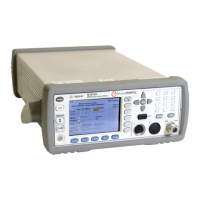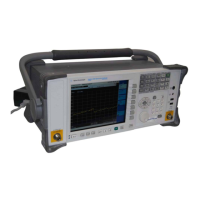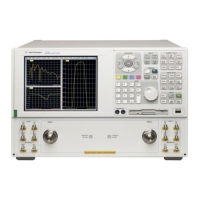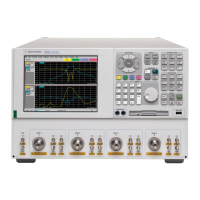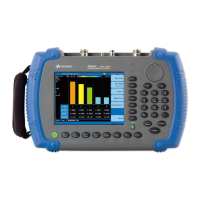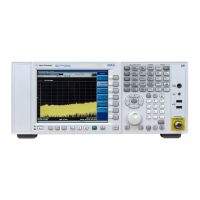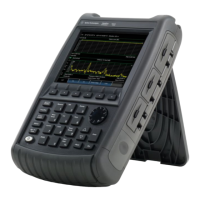1 Power Meter Remote Operation
14 N1911A/1912A P-Series Power Meters Programming Guide
The following example uses the expected value parameter to specify a
value of –50 dBm. This selects the power sensor’s lower range (refer to
“Range” on page 37 for details of the range breaks). The resolution
parameter is defaulted, leaving it at its current setting. The source list
parameter specifies a Channel B measurement. The measurement is
displayed on the lower window.
Example 4 - Specifying the Resolution Parameter
The previous examples detailed the use of the expected value and source
list parameters. The resolution parameter is used to set the resolution of
the specified window. This parameter does not affect the resolution of the
data, however it does affect the auto averaging setting (refer to
Figure 1- 2).
Since the filter length used for a channel with auto- averaging enabled is
dependent on the window resolution setting, a conflict arises when a given
channel is set up in both windows and the resolution settings are
different. In this case, the higher resolution setting is used to determine
the filter length.
The following example uses the resolution parameter to specify a
resolution setting of 3. This setting represents 3 significant digits if the
measurement suffix is W or %, and 0.01 dB if the suffix is dB or dBm.
Refer to Chapter 2, “MEASurement Commands”on page 87, for further details
on the resolution parameter. The expected power and source list
parameters are defaulted in the example. The expected power value
remains unchanged at its current setting. The source list parameter
defaults as described in the note “Agilent N1912A Only” on page 15. Note
that as the source list parameter is the last specified parameter you do
not have to specify DEF. The measurement is carried out on the upper
window.
MEAS2? -50,DEF,(@2)
specifies window specifies channel
specifies expected power value
MEAS1? DEF,3
specifies window
specifies resolution setting

